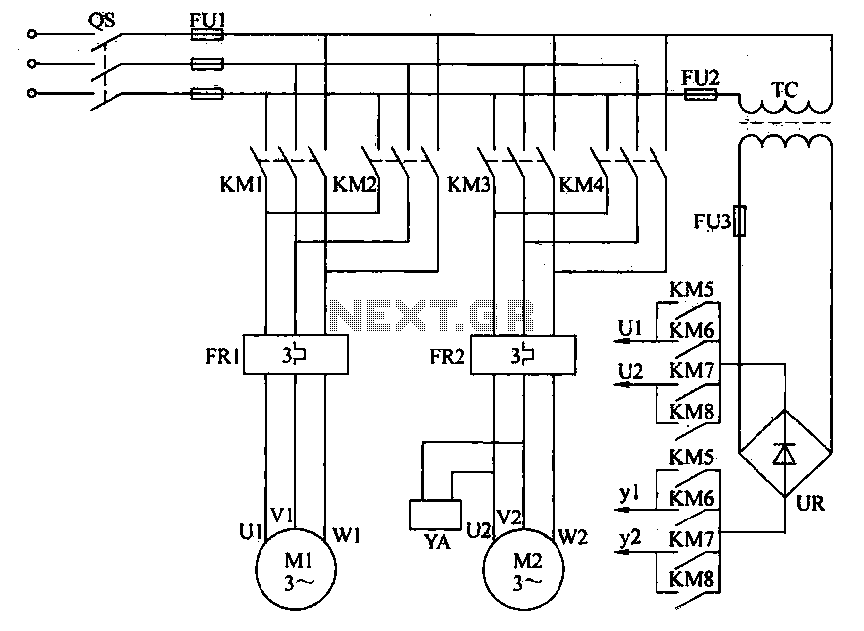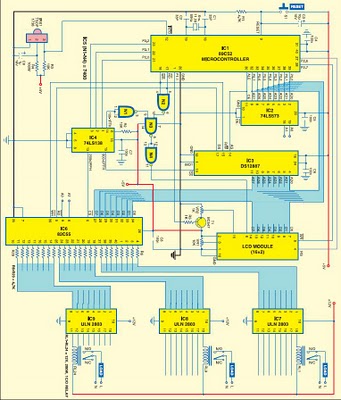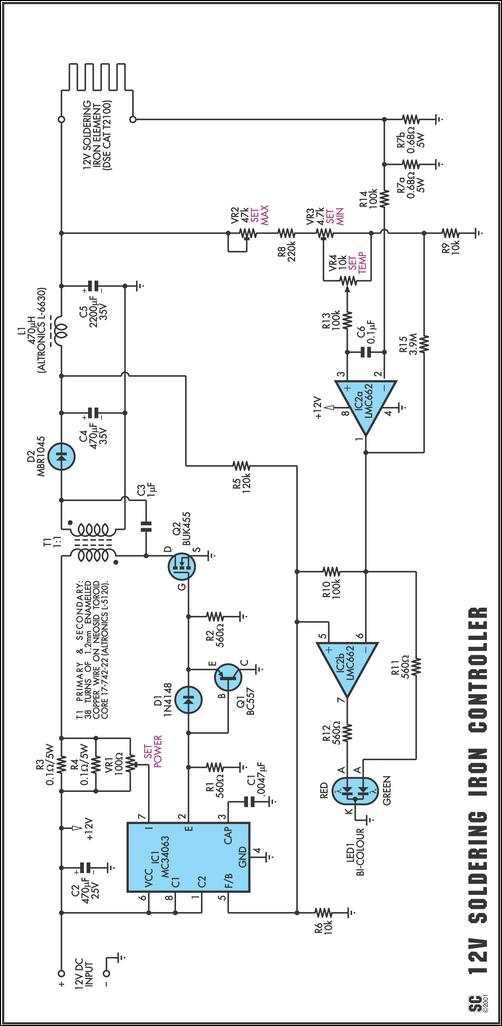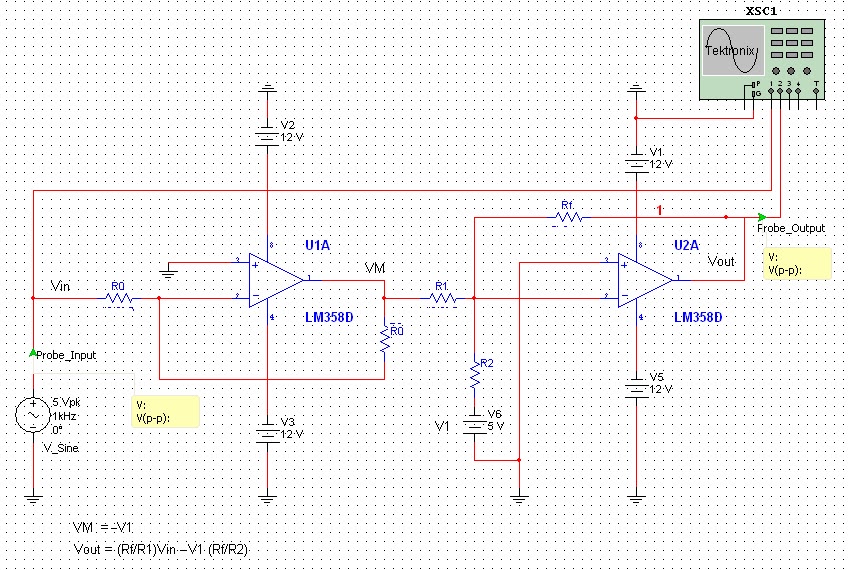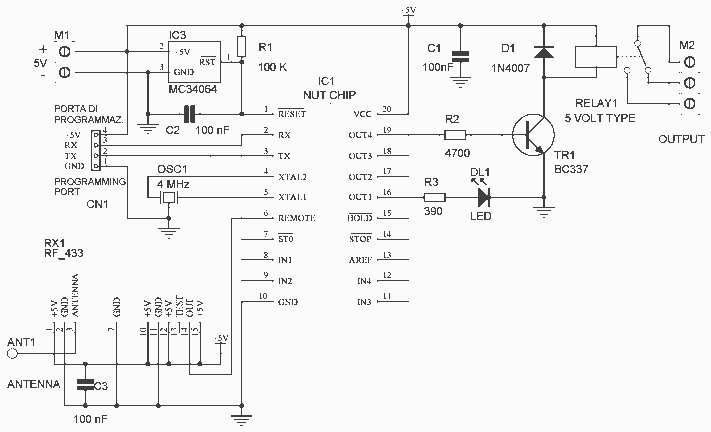
TL163 IC For Ultrasonic Remote Control
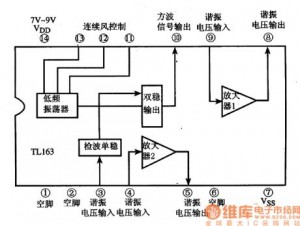
The following circuit illustrates the TL163 integrated circuit (IC) used in an ultrasonic remote control circuit diagram. Features include a detector, high-gain amplifier, and low-frequency response.
The TL163 IC is designed to facilitate ultrasonic signal processing, making it suitable for applications such as remote control systems. The circuit typically comprises several key components: the TL163 IC itself, which integrates a high-gain amplifier and a detector to process incoming ultrasonic signals.
In the schematic, the power supply is connected to the VCC pin of the TL163, ensuring that the IC operates within its specified voltage range. The input pin receives the ultrasonic signals, which are often generated by a transmitter circuit. The TL163 amplifies these signals using its internal high-gain amplifier, which is critical for distinguishing between the desired ultrasonic signals and background noise.
The detector feature of the TL163 is responsible for identifying the presence of the ultrasonic signal. When the signal is detected, the output pin of the IC can be configured to drive additional circuitry, such as a microcontroller or a relay, to execute specific commands based on the received signal.
The circuit may also include passive components such as resistors and capacitors, which are used to set the gain of the amplifier and filter the signals to ensure optimal performance. Additionally, the layout of the circuit should minimize interference and ensure that the ultrasonic signals are effectively transmitted and received.
Overall, the TL163-based ultrasonic remote control circuit provides a robust solution for wireless control applications, leveraging the advantages of ultrasonic frequencies for reliable signal transmission.The following circuit shows about TL163 IC For Ultrasonic Remote Control Circuit Diagram. Features:detector, high-gain amplifier, low-frequency . 🔗 External reference
The TL163 IC is designed to facilitate ultrasonic signal processing, making it suitable for applications such as remote control systems. The circuit typically comprises several key components: the TL163 IC itself, which integrates a high-gain amplifier and a detector to process incoming ultrasonic signals.
In the schematic, the power supply is connected to the VCC pin of the TL163, ensuring that the IC operates within its specified voltage range. The input pin receives the ultrasonic signals, which are often generated by a transmitter circuit. The TL163 amplifies these signals using its internal high-gain amplifier, which is critical for distinguishing between the desired ultrasonic signals and background noise.
The detector feature of the TL163 is responsible for identifying the presence of the ultrasonic signal. When the signal is detected, the output pin of the IC can be configured to drive additional circuitry, such as a microcontroller or a relay, to execute specific commands based on the received signal.
The circuit may also include passive components such as resistors and capacitors, which are used to set the gain of the amplifier and filter the signals to ensure optimal performance. Additionally, the layout of the circuit should minimize interference and ensure that the ultrasonic signals are effectively transmitted and received.
Overall, the TL163-based ultrasonic remote control circuit provides a robust solution for wireless control applications, leveraging the advantages of ultrasonic frequencies for reliable signal transmission.The following circuit shows about TL163 IC For Ultrasonic Remote Control Circuit Diagram. Features:detector, high-gain amplifier, low-frequency . 🔗 External reference
